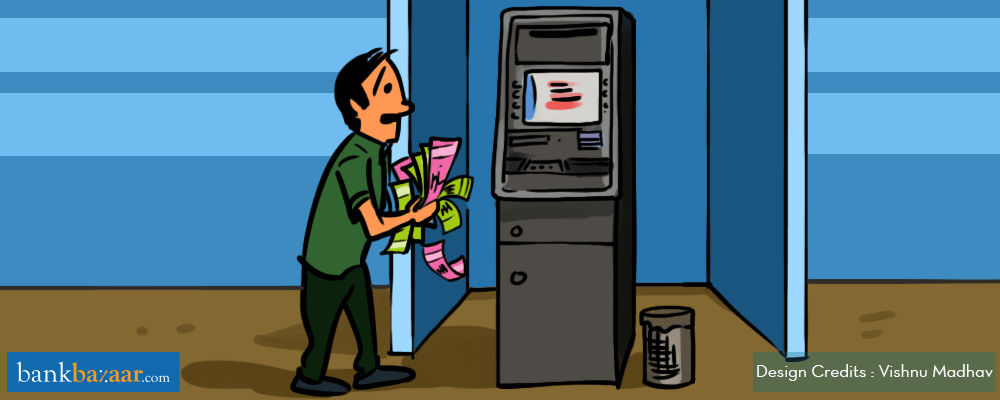
Following the recent demonetisation of the Rs. 500 and Rs. 1,000 notes by the Reserve Bank of India at midnight on 8th November 2016, depositing any old currency notes you may have will have to be done from November 10th to 30th December 2016.
In view of the RBI’s notification, all banks and ATMs across the country were closed on 9th November and 10th November 2016, respectively.
BB Tip: Going cashless with Credit Cards saved the day for many people!
The serpentine queues at the banks will give everyone good reason to get irritated and edgy. A few banks, however, have made it a little easier to deposit old currency notes. Many banks like Kotak Mahindra, Canara Bank, Axis Bank and State Bank of India, to name a few, have Cash Deposit Machines installed on their bank premises.
Additional Reading: A Must Read If You’re Headed To An ATM/Bank For Cash!
What is a Cash Deposit Machine?
A Cash Deposit Machine allows you to deposit cash in your bank account without having to wait in line at the cashier’s counter at the bank.
If the Cash Deposit Machine is located inside the bank, then you can deposit money in your account only during banking hours. In case the machine is located in the bank’s ATM, you can deposit money round the clock. Some banks have placed the Cash Deposit Machines inside the ATMs making it convenient for customers to deposit money.
Additional Reading: Digital Cash – A Cashless Transaction
How does a Cash Deposit Machine work?
A Cash Deposit Machine is easy to use. All you need is your Debit Card or your bank account number.
Some Cash Deposit Machines allow you to swipe your Debit Card to make a transaction, while others require you to manually key in your bank account number.
The machine prompts you for confirmation when you enter the account number before you deposit the currency notes. You will also be asked to enter your Debit Card PIN number.
Additional Reading: 4 Ways To Protect Your Debit Card From Cyber Crooks
Once you enter your PIN, you will need to feed the currency notes into the machine. Each note entry will reflect on the screen beside the respective denomination.
BB Tip: Remember, your deposit transaction is timed by the machine. If you take too long to feed the money into the machine, your transaction will time out.
This process of feeding each currency note into the machine can be rather tiresome because the notes have a tendency to get jammed in the machine.
Additional Reading: Difference Between A Current Account And A Savings Account
An easier method
Some other banks have Cash Deposit Machines which have a single open-and-shut slot for deposits. After entering your PIN, the deposit slot opens where you can place all your currency notes into the slot.
The machine will sort the currency notes and display the total amount of money deposited as per denomination. Confirm the amount and select ‘Deposit’.
Once this is done, the machine prints your transaction slip with the details of the deposit you made.
That was easy, wasn’t it?
Additional Reading: Financial Independence With A Credit Or Debit Card
What to remember when using a Cash Deposit Machine
Cash Deposit Machines accept a minimum deposit amount of Rs. 100/- and have a maximum limit of Rs. 49,000/-
Not all currency note denominations are accepted in Cash Deposit Machines. If you’re wondering if Cash Deposit Machines accept notes of Rs. 100, Rs. 500 and Rs. 2,000, then yes, they do!
Another way to avoid stressing yourself out in case you are strapped for cash is to go cashless. In today’s day and age, there are very few places that don’t welcome Credit Card or Debit Card transactions. Mobile wallets too are catching on quickly.
Additional Reading: 10 Tips To Use Your Mobile Wallets Right
Who’s ready to go paperless? Have you found a plastic mate you can depend on?